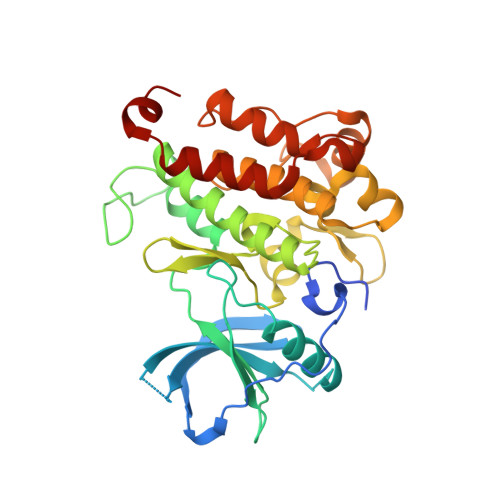The juxtamembrane region of TrkA kinase is critical for inhibitor selectivity
Furuya, N., Momose, T., Katsuno, K., Fushimi, N., Muranaka, H., Handa, C., Ozawa, T., Kinoshita, T.(2017) Bioorg Med Chem Lett 27: 1233-1236
- PubMed: 28159414
- DOI: https://doi.org/10.1016/j.bmcl.2017.01.056
- Primary Citation of Related Structures:
5H3Q - PubMed Abstract:
Although numerous crystal structures for protein kinases have been reported, many include only the kinase domain but not the juxtamembrane (JM) region, a critical activity-controlling segment of receptor tyrosine kinases (RTKs). In this study, we determined the X-ray crystal structure of the tropomyosin receptor kinase (Trk) A selective inhibitor A1 complexed with the TrkA kinase domain and the JM region. This structure revealed that the unique inhibitor-binding pocket created by a novel JM configuration yields significant potency and high selectivity against TrkB and TrkC. Moreover, we validated the importance of the JM region for the potency of A1 using in vitro assays. The introduction of moieties that interact with the JM region will be one of the most effective strategies for producing highly selective RTK inhibitors.
Organizational Affiliation:
Kissei Pharmaceutical, 4365-1, Kashiwabara, Hotaka, Azumino City, Nagano Pref. 399-8304, Japan; Graduate School of Science, Osaka Prefecture University, 1-1 Gakuen-cho, Naka-ku, Sakai, Osaka 599-8531, Japan. Electronic address: noritaka_furuya@pharm.kissei.co.jp.

















